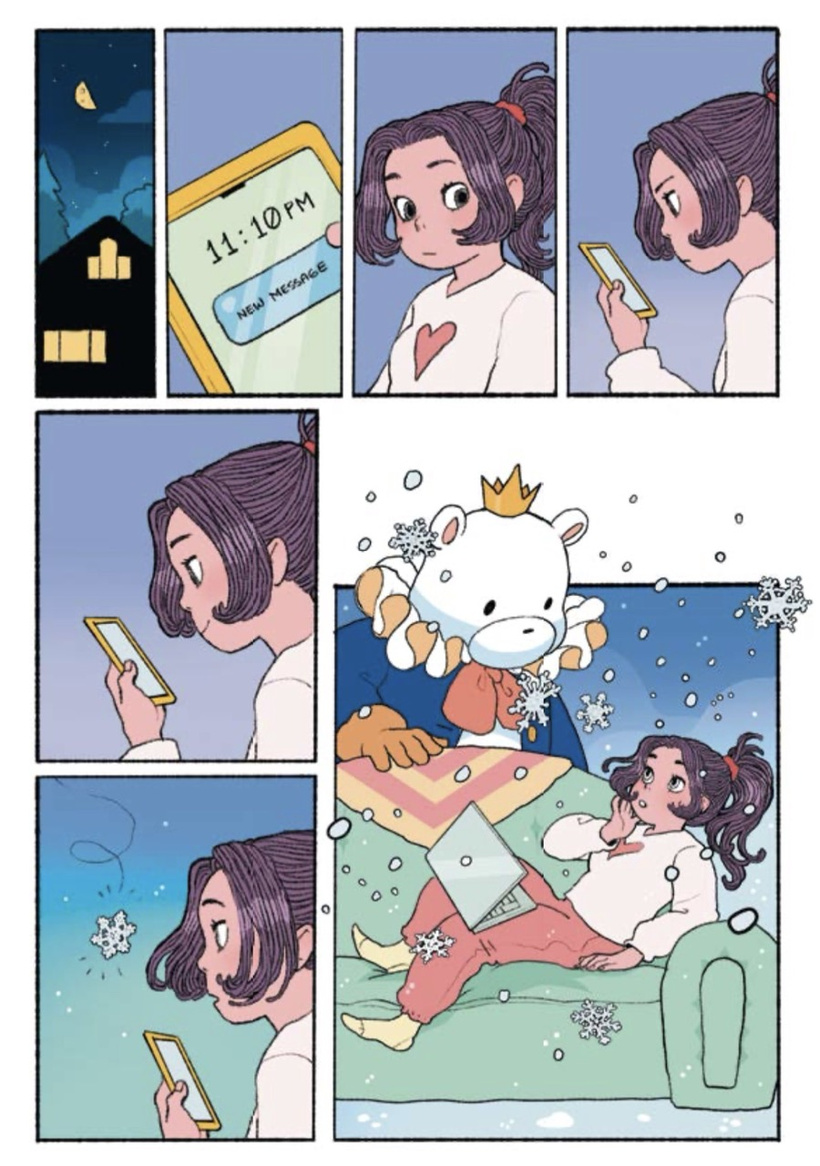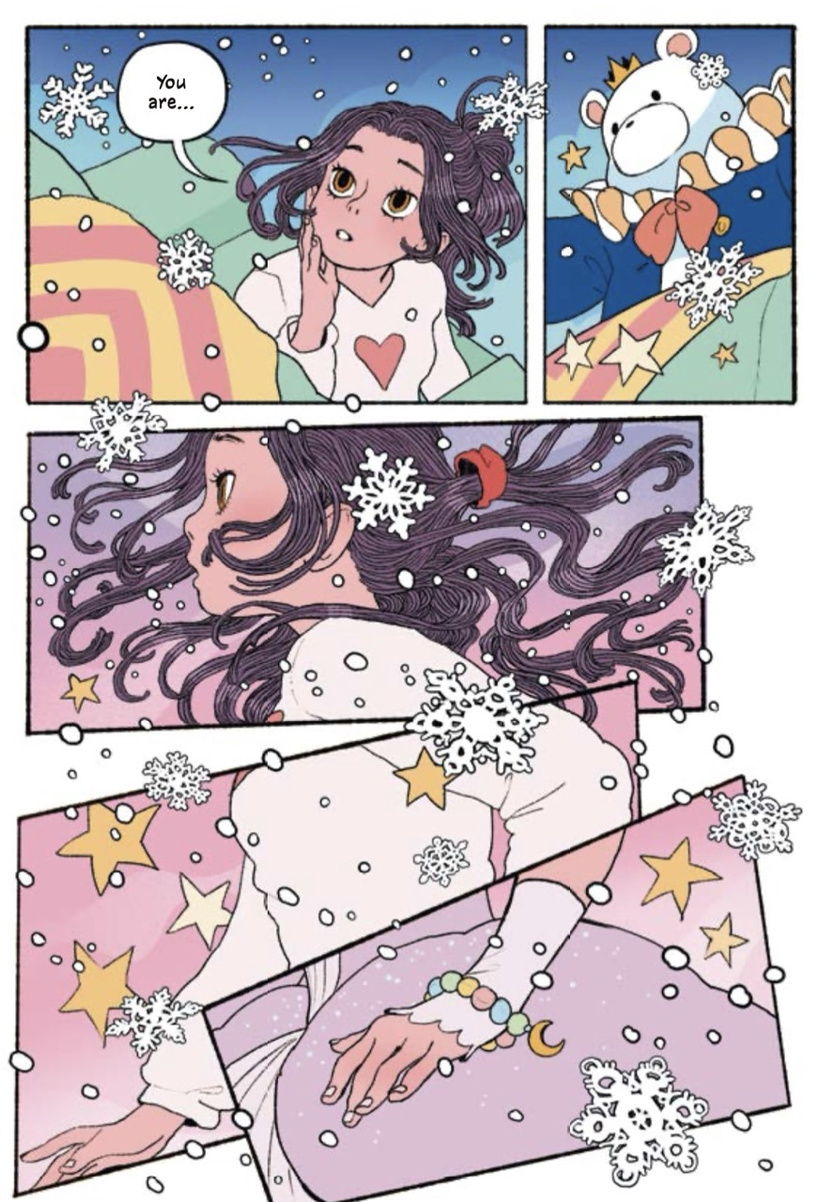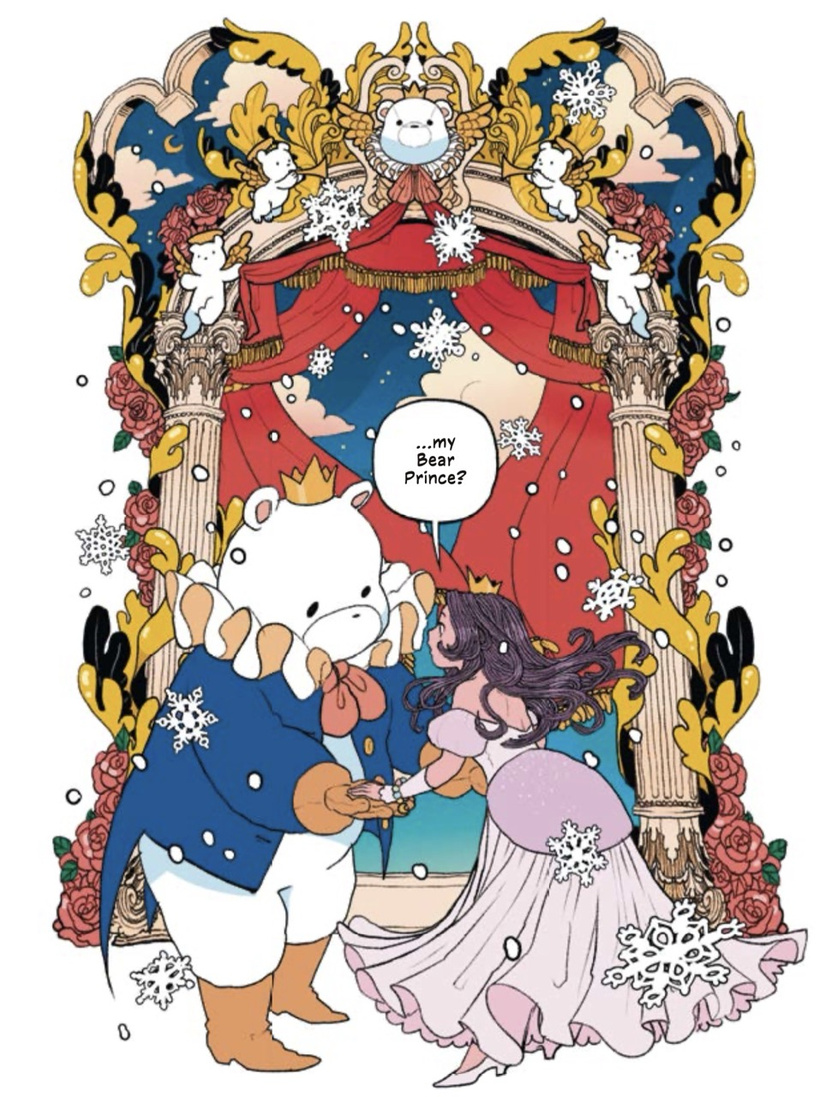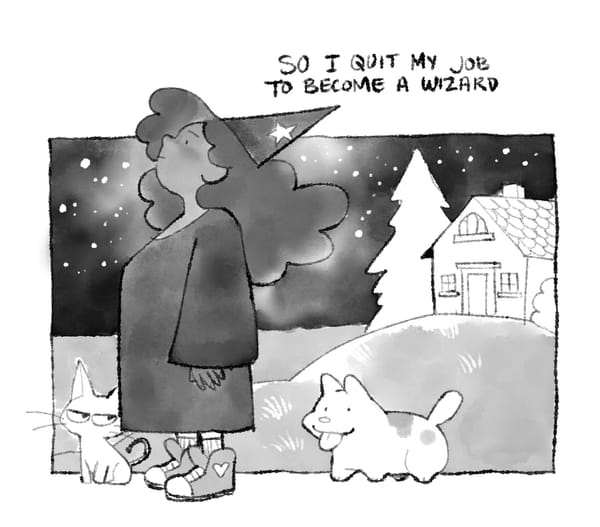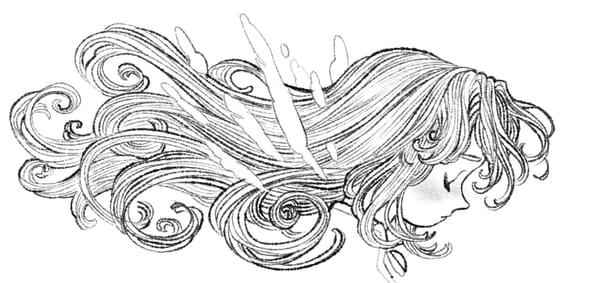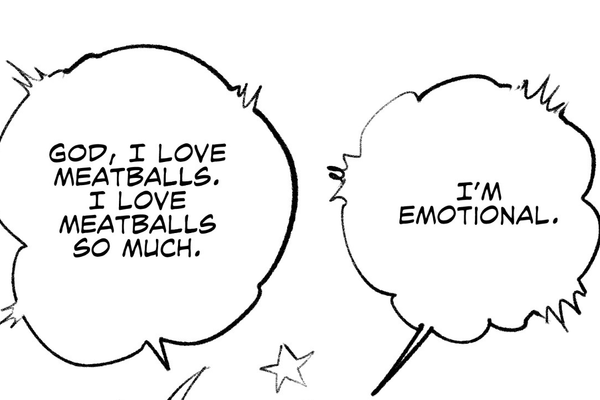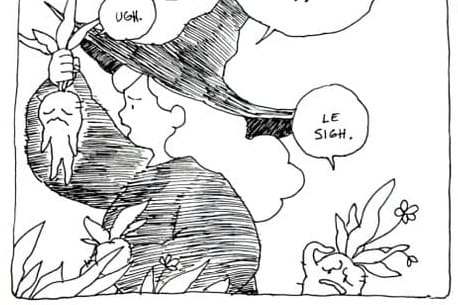We're Sizzling
I'm burned out, Tomie dePaola makes comics, and I have sad gay feelings about it.
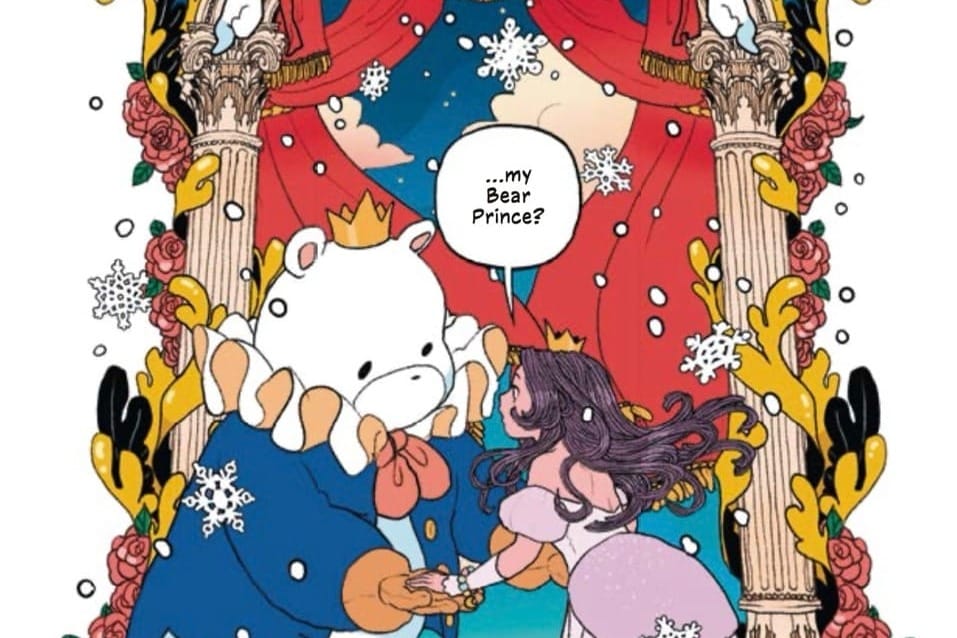
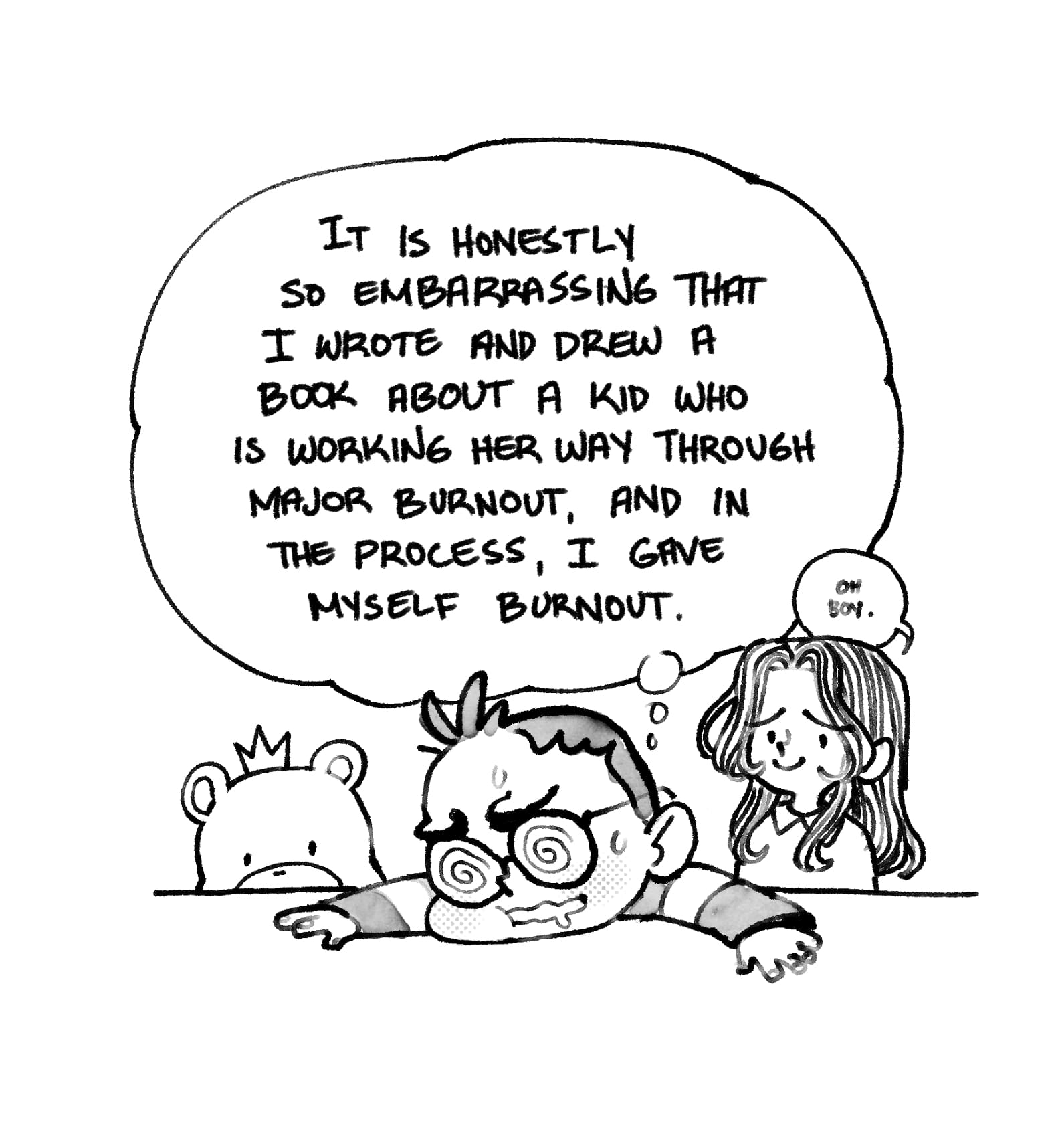
WHEW man, I'm burned out, ironically—Angelica and the Bear Prince may be about a kid experiencing burnout and bouncing back, but that still doesn't make me a subject matter expert on the topic. I feel myself being tempted by the notion of learning everything about burnout in the hope that it would help me out somehow. I imagine myself shrinking the whole topic into a little thing I can turn over in my hand, and that it would make me feel like I've achieved dominance over the concept of burnout itself. Unfortunately, thats not how anything works, and here I am, struggling to let go of my workload long enough to have a breather.
I miss when my solution for burnout was to obsessively make tarot decks. I wish I could do that again, but I've currently hit a point where making art kind of stresses me out in a way I don't think I've ever experienced before. I’m still working on figuring out how to bounce back, but in the meantime I’m relying on looking outward.
Yesterday I presented for some MFA children's book writing students about comics and my own work, and I got a question about burnout. I was happy for it. It gave me an opportunity to force myself to name all the tools I use to recover from burnout. Mostly, it adds up to consuming art that I don't or won't make myself. This time, I've just been reading. I read through Barbara Elleman's book on Tomie dePaola, The Worlds of Tomie dePaola published by Simon and Schuster, first in 1998 and then reissued in 2021, the year following dePaola's death and three years before Elleman’s.
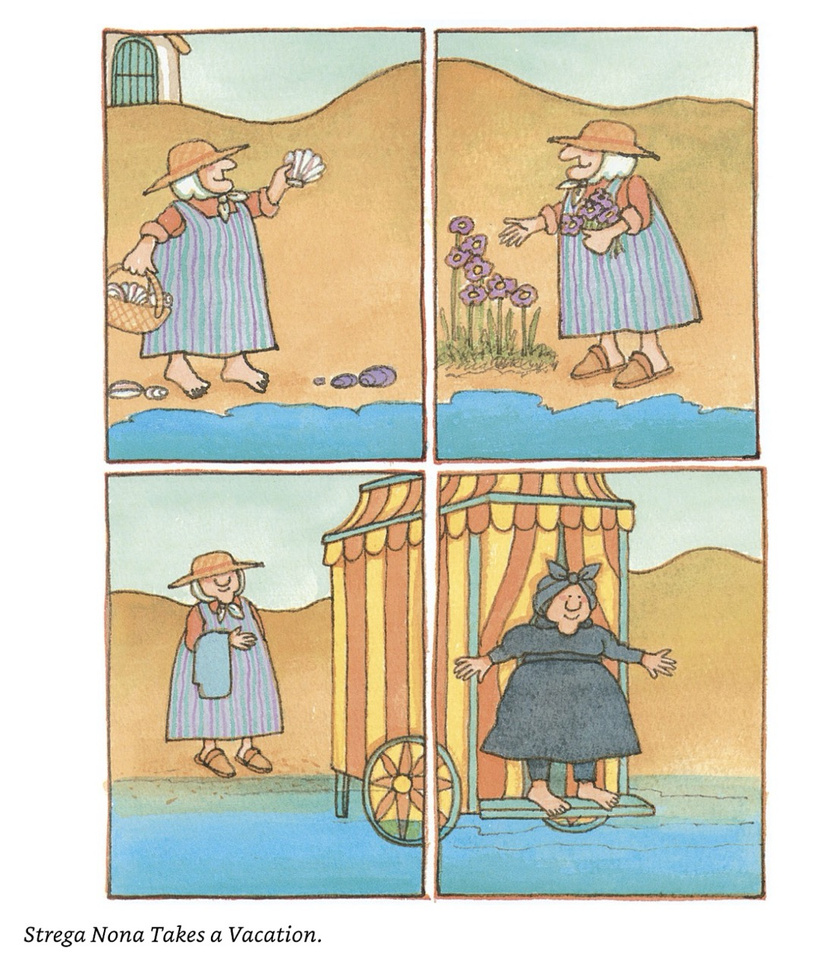
I’ve always loved his work, and I wanted to stress to this group of writing students that the relationship between comic books and the illustrated book is closer than we think, and that’s evidenced by the editorial process Elleman describes in her recollection of dePaola’s work.
She writes about how dePaola’s considerations for his artwork changes depending on whether he collaborates with another author or if he’s writing and drawing everything himself. Tomie DePaola is a fantastic traditional book illustrator, but he considers the turn of the page and the efficacy of the gutter in much the same way most comics people work. Elleman talks about the way Tomie figures out the balance between which words to use to communicate an idea, when an image would convey the same idea and more, and how to get those two things to work together to provide an optimal experience for the reader.
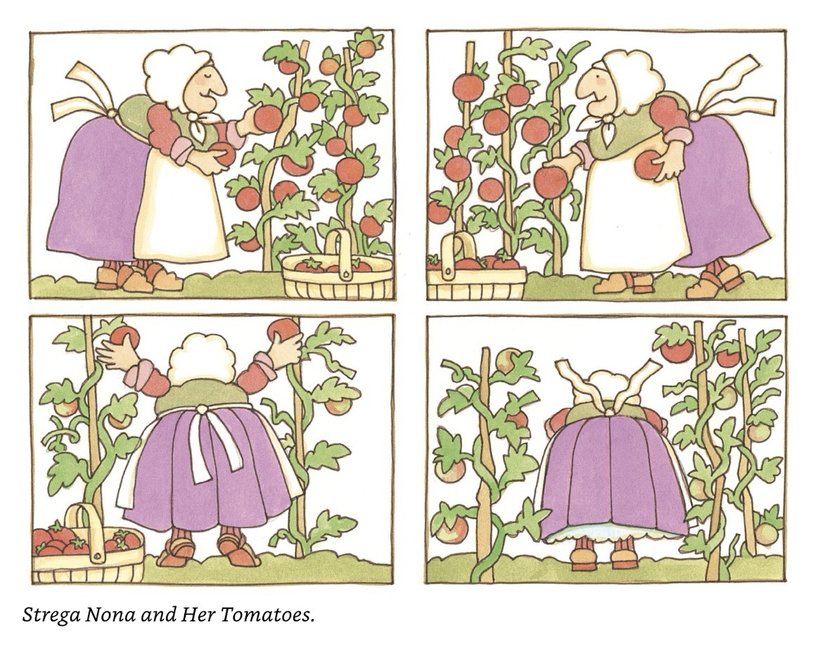
Elleman’s discussion of dePaola’s comics, because that’s really what they are, shy away from calling them comics. She calls them sequentials, which I suspect reflects the delineation between comics and children’s books in 1998—pulpy ephemera for the spinner rack versus respectable illustrated volumes to aid in the literary development of fledgling readers. I’m hard-pressed to find that attitude now—at my first ALA experience, I met librarians and readers of a wide range of ages and locales who were incredibly enthusiastic advocates for comics in their classrooms and districts.
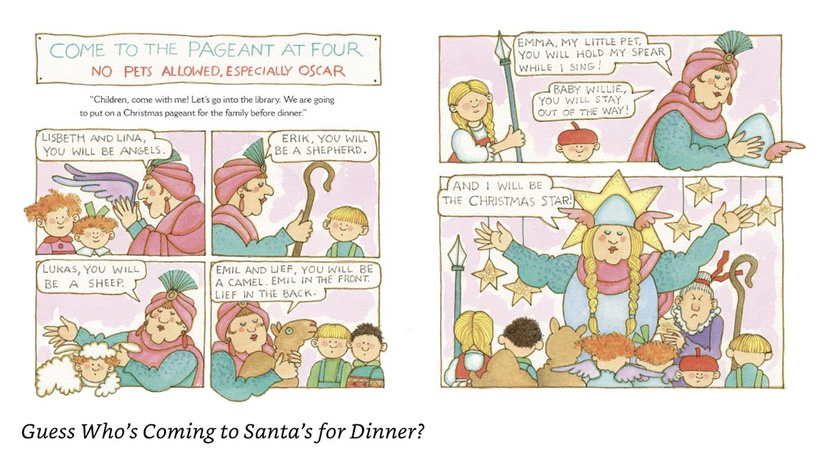
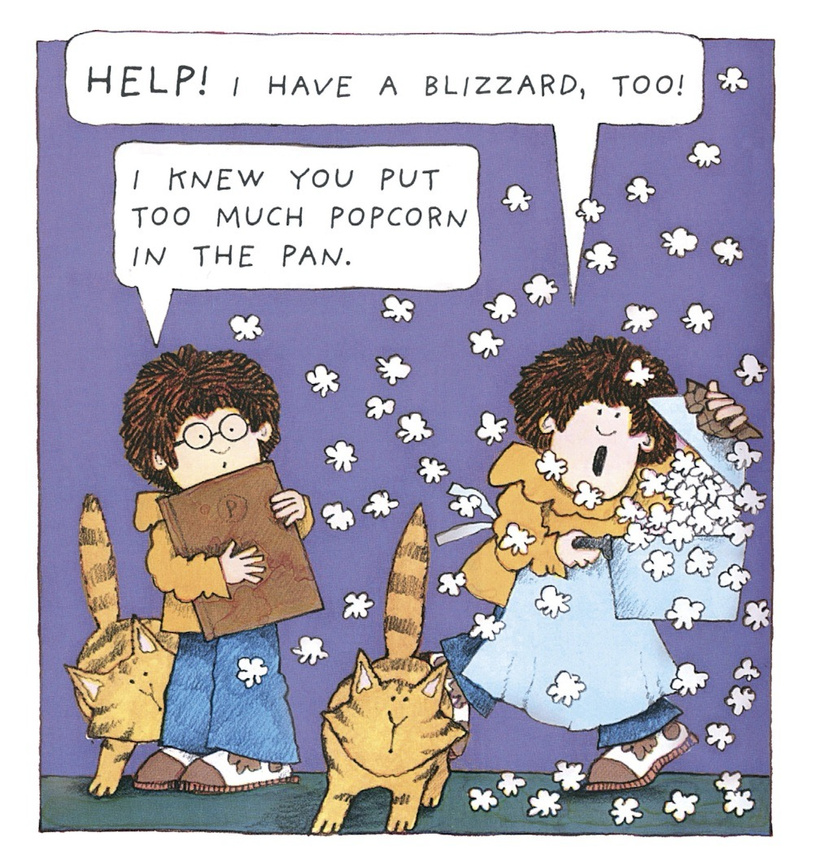
Tomie dePaola’s work holds a special place in my heart because his work was inescapable if you were parochially educated. He came from an Italian and Irish Catholic family, and a lot of his books reflect that experience. But beyond that, in the final year of his life, Tomie dePaola came out publicly. DePaola talks about how he would not come out during his active professional tenure because he knew libraries and schools would stop buying his books, which broke my heart. In reading The Worlds of Tomie dePaola, I was struck by how little Elleman included about his personal life after he became a household name. I imagined, since they knew each other in mostly a professional capacity, she might have wanted to stay in her lane out of respect for her colleague, which I understand. But I’m still a little disheartened that the last primary source about dePaola’s life would not include his coming out, considering that Elleman died just three years after the reissue of this book.
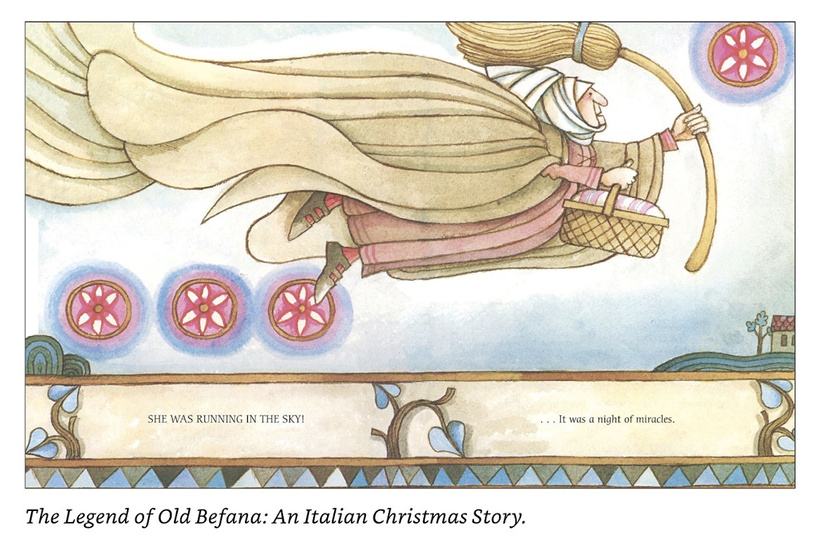
It’s not that I feel that dePaola has some sort of special obligation to avail parts of personal life to the public ever on and after his death, and nor should Elleman. They’ve both passed, and they gave us what they gave us, which I think is lovely. I just find myself thinking about it a lot, especially in this hostile political moment. I’m still learning about book challenges and book bans, and I’ve largely just accepted this will be part of the shape of my career because I just don’t see myself not telling stories about queer people. I don’t want to relegate my queerness into subtext the way dePaola needed to for Oliver Button.
It’s not a wonder I’m a little worn out, after all. I think I like to pretend I can do everything all the time, and when the burnout hits I get to pretend it’s a mysterious malady that has suddenly reared its head to menace me in my hour of busy-ness. I’m admitting that the political moment affects the shape of my life in meaningful ways. I have to be extra cautious when I travel. I’m making a conscious effort to memorize phone numbers and be less reliant on my mobile devices away from home. I have to let the marketing and publicity folks at Random House know my concerns. There are new things for me to consider all the time for my personal safety, for the health of my career, and for my relationship to my own work in the long term.
So I’m giving myself a little break. I think this means there will be a lot more fanart while my deadlines will need to be pushed back again (apologies to my editors). I’m serious about maintaining a long and healthy relationship with making stories and art, so I actually have to listen to my brain and my body when they start hitting walls. There will be no shrinking of the concept of burnout into a small object I can turn over in my hands. I’ll never feel bigger and more in command than the requirements of my own health. But I’m also excited to give myself a break and let myself be in the seats instead of trying to be the whole circus. That’ll be nice.
Anyway, here are some color previews of Angelica for you to enjoy, colored by the amazing Angela Lu, whose work I will link here.
You can preorder Angelica and the Bear Prince at any of the places listed here!
